John James Audubon (1785-1851)
Get a John James Audubon (1785-1851) Certificate of Authenticity for your painting (COA) for your John James Audubon (1785-1851) drawing.
For all your John James Audubon (1785-1851) artworks you need a Certificate of Authenticity (COA) in order to sell, to insure or to donate for a tax deduction.
Getting a John James Audubon (1785-1851) Certificate of Authenticity (COA) is easy. Just send us photos and dimensions and tell us what you know about the origin or history of your John James Audubon (1785-1851) painting or drawing.
If you want to sell your John James Audubon (1785-1851) painting or drawing use our selling services. We offer John James Audubon (1785-1851) selling help, selling advice, private treaty sales and full brokerage.
We have been authenticating John James Audubon (1785-1851) and issuing certificates of authenticity since 2002. We are recognized John James Audubon (1785-1851) experts and John James Audubon (1785-1851) certified appraisers. We issue COAs and appraisals for all John James Audubon (1785-1851) artworks.
Our John James Audubon (1785-1851) paintings and drawings authentications are accepted and respected worldwide.
Each COA is backed by in-depth research and analysis authentication reports.
The John James Audubon (1785-1851) certificates of authenticity we issue are based on solid, reliable and fully referenced art investigations, authentication research, analytical work and forensic studies.
We are available to examine your John James Audubon (1785-1851) painting or drawing anywhere in the world.
You will generally receive your certificates of authenticity and authentication report within two weeks. Some complicated cases with difficult to research John James Audubon (1785-1851) paintings or drawings take longer.
Our clients include John James Audubon (1785-1851) collectors, investors, tax authorities, insurance adjusters, appraisers, valuers, auctioneers, Federal agencies and many law firms.
We perform John James Audubon art authentication, appraisal, certificates of authenticity (COA), analysis, research, scientific tests, full art authentications. We will help you sell your John James Audubon or we will sell it for you.
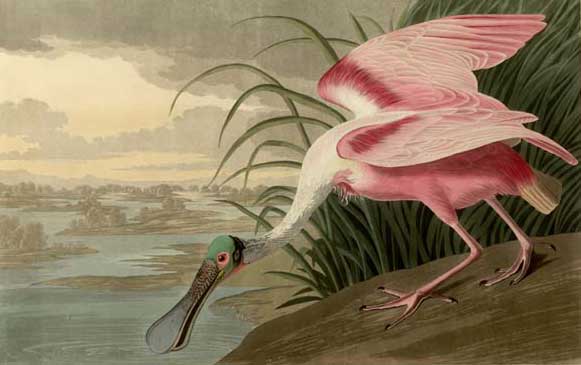
John James Audubon was an early American painter and ornithologist. Best-known for his cataloguing and depiction of North American birds, Audubon was both a naturalist and a talented artist. He was virtually self-taught as a painter and mainly created compositions of wildlife, though he also painted portraits in order to support himself.
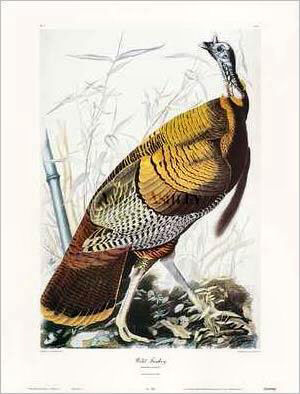
Wild Turkey
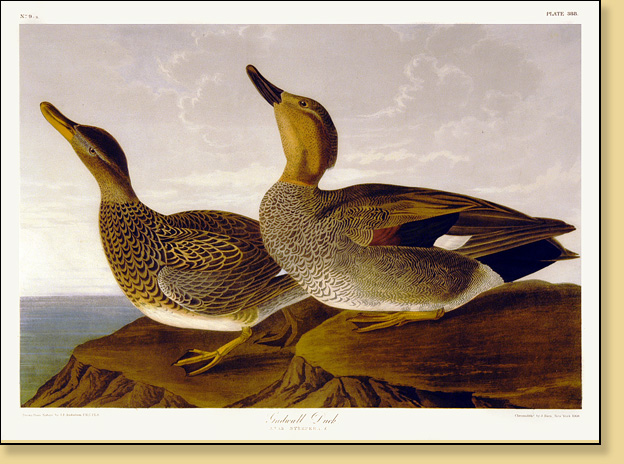
Gadwall Duck
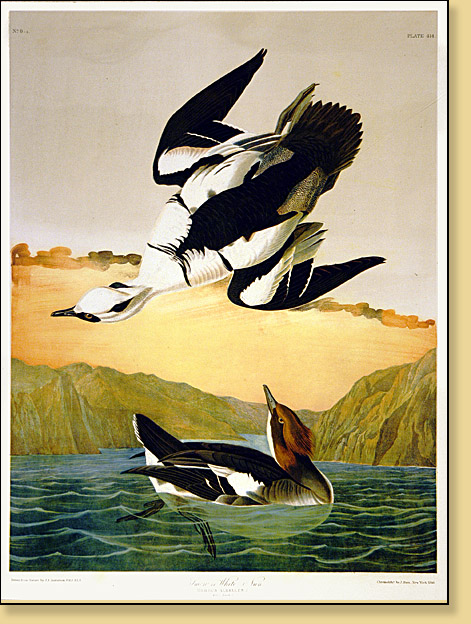
Smew
Born in Haiti as the illegitimate son of a French sea captain, Audubon was raised in France by his stepmother. When he was 18, Audubon’s father procured a fake passport for him to leave the country in order to avoid serving in the Napoleonic wars. Upon entering the United States, Audubon became very ill with yellow fever and was placed in a Quaker boarding house. The Quaker women who nursed him back to health taught him how to speak their unique form of Quaker English.
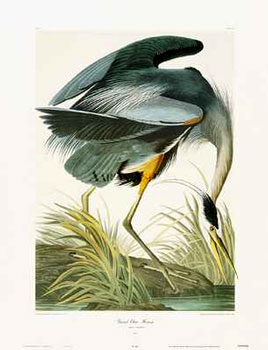
Heron
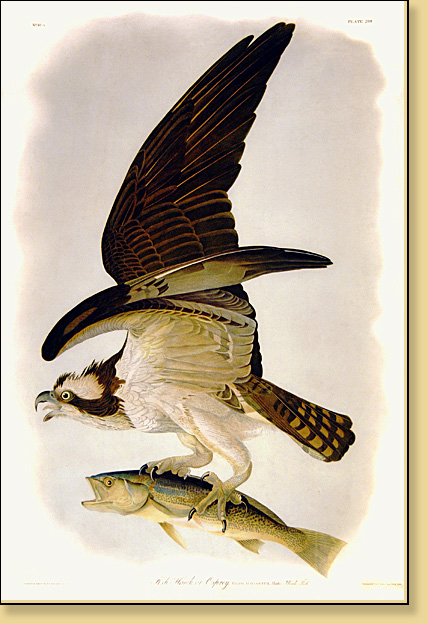
Osprey
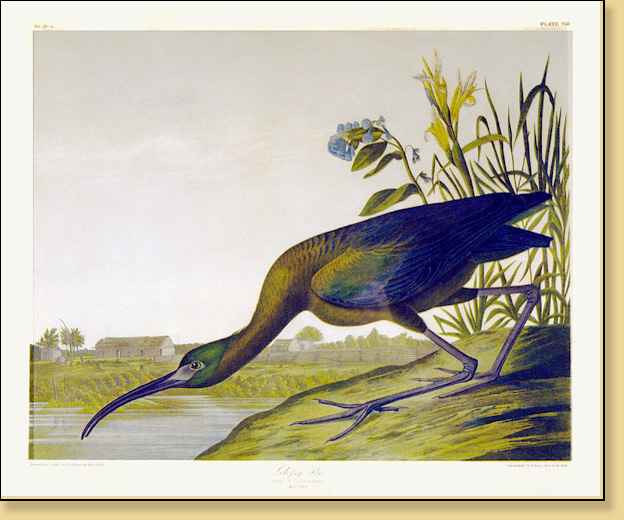
Once he recovered, Audubon was put in charge of overseeing the family farm in Philadelphia. It was here that he began to truly study natural history and became one of the first American bird trackers. He began to document, draw and paint all of the birds that he saw, which led to his notorious career.
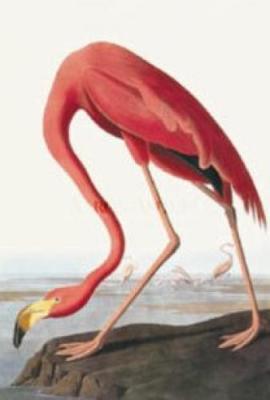
American Flamingo
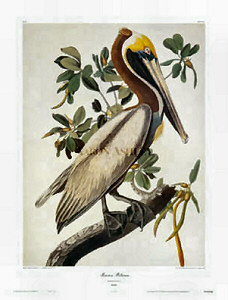
Pelican
Though he was a successful farmer for many years in both Pennsylvania and Kentucky, Audubon eventually became bankrupt. This was a turning point for Audubon and he decided then to pursue his natural history studies further. Armed with his paints and a gun, he set sail down the Mississippi River in search of as many birds of North America that he could find. He arrived in New Orleans in 1821 and spent much of his time there roaming through the Louisiana woods hunting and painting. He also procured a student, the daughter of a plantation owner. The Audubon State Historic Site is now located on the plantation, with daily guided tours.
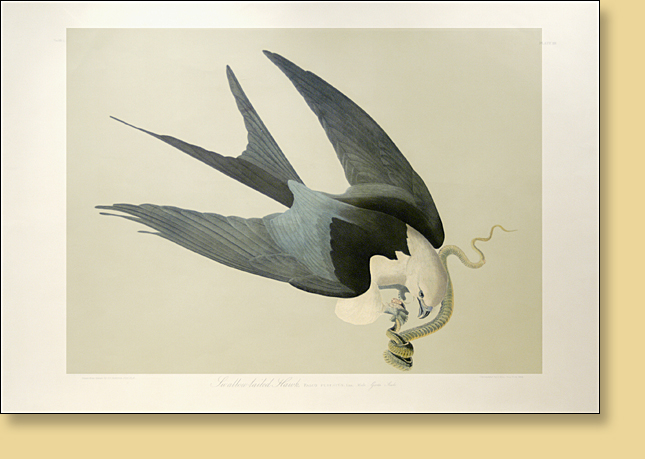
Swallow-Tailed Hawk
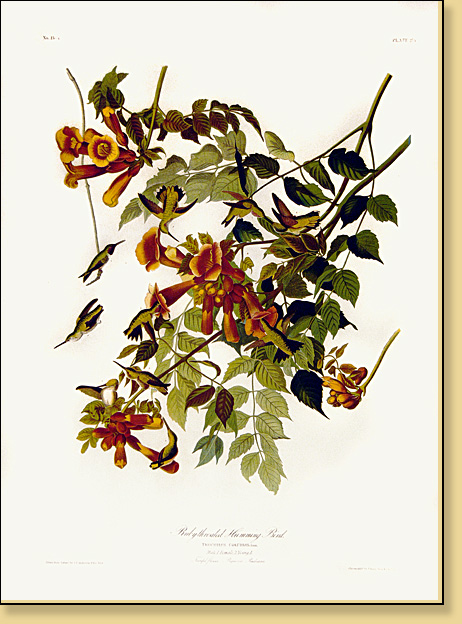
Ruby-Throated Hummingbird
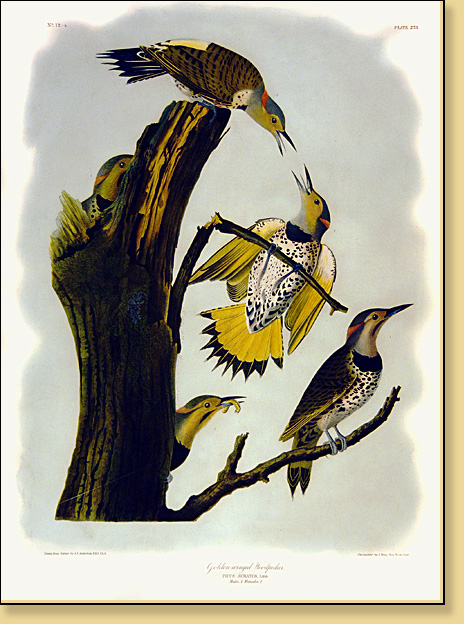
Golden-Winged Woodpecker
Unlike most naturalists and animal lovers today, Audubon’s way of documenting and appreciating wildlife was to kill it. He would shoot the birds that he saw with a fine shot in order to avoid blowing them into pieces. Audubon was obviously not concerned with diminishing the population of the species that he was documenting, for he even once bragged that shooting one hundred birds a day was a very small number for him. Audubon’s goal was to find the rarest birds possible. When he did find a bird that he wished to paint, he would prop it up and paint it in its natural habitat, and while this may have been a cruel way to document the species, it proved to help him create beautiful paintings of these then unknown birds.
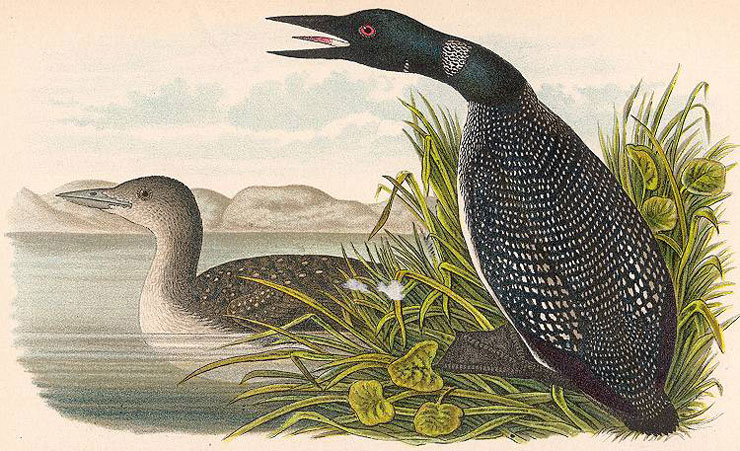
Loons
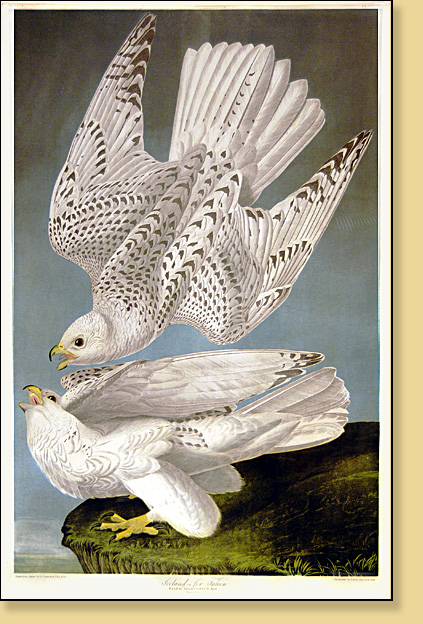
Grey Falcon
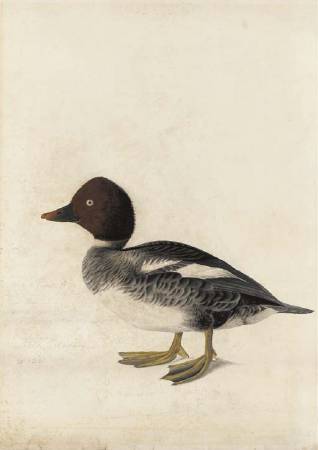
Redhead Duck
In order to support himself (since, even though his documentation of birds was important, he could not make a living from it), Audubon received commissions for portraits while his wife tutored rich plantation owners’ children.
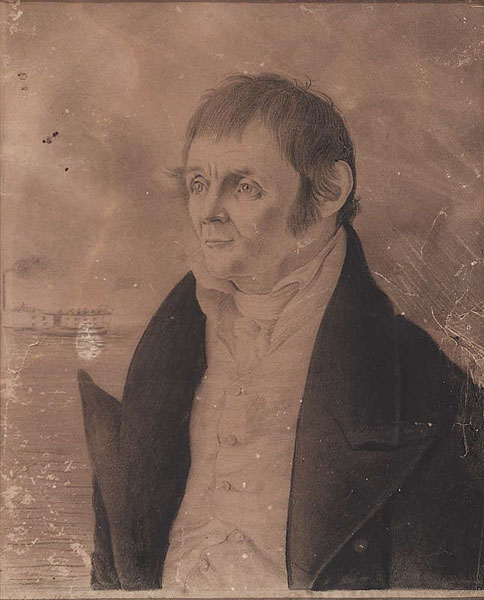
Portrait of Captain Gilbert Morris
It was his intention to publish his findings about the birds, and when he couldn’t find one in the United States, he traveled to England. The British loved his documentations and even hailed him as “The American Woodsman”. Thus, in England he raised enough money to publish “Birds of America.” When “Birds of America” was finally published, his paintings were turned into aquatint engravings on large plates measuring 39 X 26 inches.
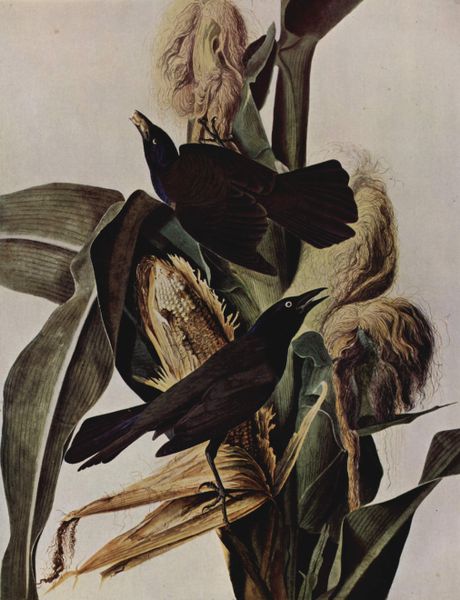
Black Crows on a Corn Stalk
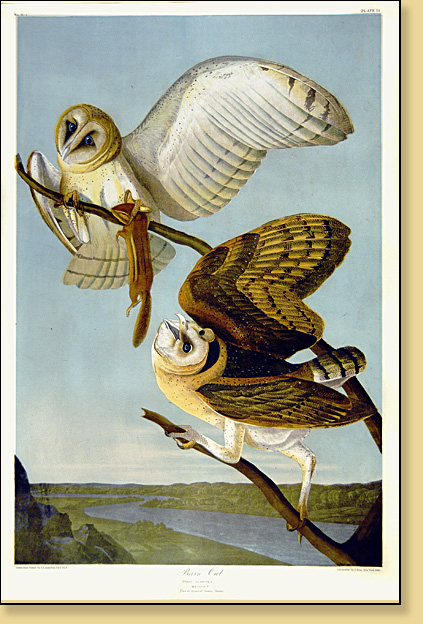
Barn Owl
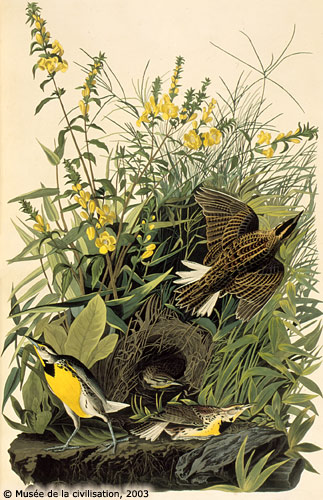
The Garden
Upon his return to the United States, Audubon continued to make expeditions, particularly around the Hudson River. He eventually bought an estate there which is now Audubon Park. Towards the end of his life, “Birds of America” was published in the United State and he had begun to work on a study of mammals which was published after his death by his sons. He was highly prolific during his lifetime and traveled extensively, so the possibility of one of his works showing up somewhere is quite possible and would be highly prized.
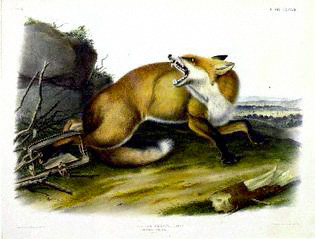
Fox
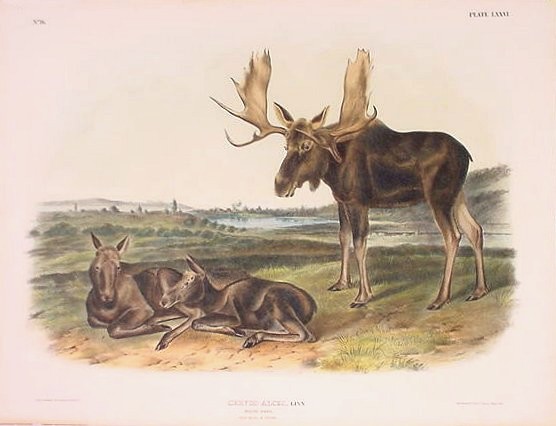
Moose
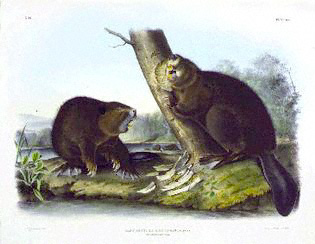
Beavers
